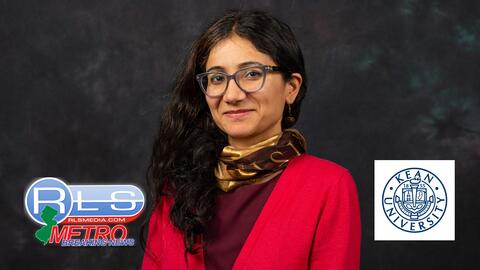UNION, N.J. — Nidhi Thakur, Ph.D., is a Kean University economics lecturer with a postdoc in health economics from the University of Chicago. She is an expert in health, labor and gender economics. In this interview, she offered her views on the pay gap that women face across industries.
**Q: What does the gender pay gap mean?**
Simply put, women earn less than their male counterparts doing the same job. For every dollar paid to a male, a female worker in the same situation gets 79 to 80 cents. Statistics for 2018 from the American Association of University Women show full-time working women earned a median salary of $47,000 in the U.S., compared to the $53,000 earned annually by men.
This gap becomes significant over time and contributes to the relative wealth of women throughout their careers and in retirement. For example, over a 47-year career, the total estimated difference between women's and men's earnings is $700,000 for a high school graduate, $1.2 million for a college graduate, and $2 million for a professional school graduate. I ask women, "Do you want to give up $2 million in lifetime earnings because of your gender?" No one wants that.
**Q: Will things change?**
I don’t see them changing in the near future. We need a lot more activism. More women leaders need to show up on corporate boards, so at the very least, the issue of the gender pay gap is raised at the highest levels of corporate decision-making. Currently, the problem is not very visible and is almost taken for granted. It needs attention, which will only come with more women taking on leadership positions and making their presence felt.
Another small but excellent way to change our thinking about this is to move away from our male-oriented language. We talk about a “chairman” of the board. When we are giving examples, we often don’t assume women are in business roles. We can all make that simple change, which I believe would have a ripple effect.
**Q: What other steps can be taken?**
We should try to have gender-blind employee reviews. It would be difficult, but a gender-blind assessment would solve this problem. We would avoid the built-in bias, and their contributions and work product would judge employees.
Also, women need to be coached to become more aggressive self-advocates in salary negotiations and to create better workplace environments.
Finally, equal opportunity also should mean women have an equal opportunity to fail. Many women do not want to take risks at their jobs because they are held to a different standard. They need to be told that they can fail as much as any man does and learn from those experiences. The idea that “I can try it and fail,” would be a significant change.
**Q: Given the pay gap, do women have power that they can yield in the economy?**
Absolutely. Women make most of a family’s purchasing decisions. Their influence is seen in all kinds of buying decisions, from laundry detergent to clothing to major purchases like appliances and cars. If women use the power of their purses in the marketplace, they can influence what is going on in the corporate world and set a tone for what is produced in the world.
This buying power could also have an impact in the workplace. The more companies can tout their gender sensitivity at work, the more women might be tempted to buy their products as well as want to work there. That would lead to increased pressure on companies to alter their gender practices.
**Q: How do you work as an activist while also being a professor?**
I consult with the Columbia University Earth Institute, Center for Sustainable Development. They have gender-related training centers to empower women in Africa, India, Thailand and other countries. They open centers to train women on basic computer skills and other workplace skills so that they become capable and confident human beings and more employable. I help them create teaching models for such classes.
Recently, I was a panelist at a Center for Sustainable Development forum during the week of the United Nations General Assembly, discussing sustainable development, gender and data usage.
At Kean, I have up to 150 young students, women and men. As a professor, I avoid stereotypical roles for men and women in our examples. I started an economics club, and I ask the students in the club to read about why there are fewer women economists than men. I have an activist voice as a teacher in class and as an advisor.
